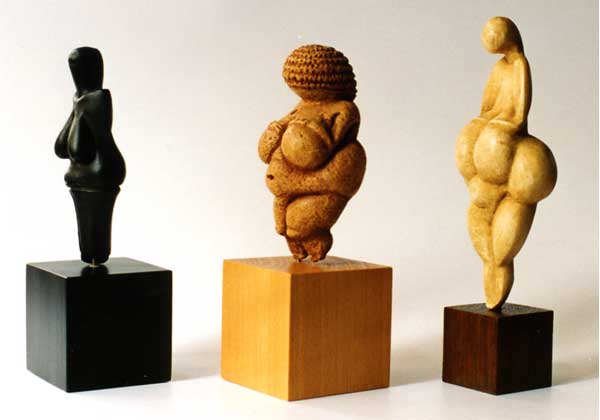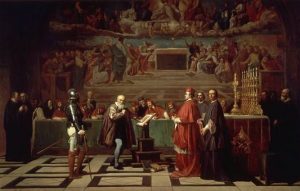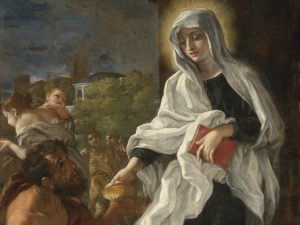Since the early stages of human life and prosperity, art has used by different societies to display their craftsmanship and to demonstrate their beliefs. Two types of artistic creations are the paleolithic Venus figurines from southern France and the bronze age jade figurines of China. These two art pieces contrast in both usage and symbolism. The figurines in the paleolithic, European era were made by hunters and gatherers, while jade figurines during the Bronze Age are part of an advanced civilization. Still, both provide scholars insight into the practices and goals of the people at the time.

One of the earliest forms of art includes the figurines from the European paleolithic era. Created by homo sapiens about thirty thousand years ago, they were called Venus figurines by scholars after the Roman goddess of love Venus, because they depict the body of a woman. Today, more than one hundred have been found and they all have similar characteristics. The figurines range in height but are on average 150mm tall. They are made from materials such as steatite, calcite, limestone, bone, ivory, and clay.1
Today we wonder about the meaning and purpose behind the faintness of facial features and hands in these figurines, yet we note the emphasis on the woman’s hips and legs. Although we do not yet have definite answers to this question, there are many theories available. One popular theory is that the societies that created these figurines had a deep interest in female fertility. Other theories mention their hope for survival and fear for extinction.2 A less popular and more controversial theory is the possibility that Venus figurines were self portraits.3 Still, different theories are necessary in order to better comprehend the motifs behind the Venus figurines and their crafters.

In contrast to the Venus figurines in Europe, Chinese jade figurines offer a clearer sense of the usage of art in the Bronze Age. Jade figurines were often buried with wealthy individuals along with their former slaves, food, jewels, and many other objects. Although the jade figurines took very long to make and were a process of hard labor, their symbolism of prosperity and luxury in Chinese ceremonial traditions demonstrate the practice of ancestral worship and how important it was to them. Because they believed spirits passed into another realm of existence, from which they had the power to affect future generations, tombs were lavished with tools so that masters might live plentifully along with sacrificed slave bodies that would continue to serve their master. For example, in the tomb of lady Fu Hao, wife of the Shang king Wu Ding, 755 jade carvings, 468 bronze objects, 130 weapons, and 4 mirrors were buried.4
Although prehistoric pieces such as figurines, cave paintings, and carvings are often overlooked because of the ambiguity of their meaning, they convey people’s emotions, ideas, and talents. Creations such as the Venus and jade figurines provide the world insight into the practices of our ancestors and the kinds of resource available to them. They serve as a timeline and teach us about their interests and abilities in eras as diverse as the European Paleolithic and Chinese Bronze Ages.
- Kaylea Vandewettering, “Upper Paleolithic Venus Figurines and Interpretations of Prehistoric Gender Representations,” PURE Insights 4, no. 1 (May 29, 2015), http://digitalcommons.wou.edu/pure/vol4/iss1/7. ↵
- Jerry H. Bentley, Herbert F. Ziegler, Traditions and Encounters: A Global Perspective on the Past Volume 1: From the Beginning to 1500 (New York, NY: McGraw-Hill, 2011), 14. ↵
- Kaylea Vandewettering, “Upper Paleolithic Venus Figurines and Interpretations of Prehistoric Gender Representations,” PURE Insights 4, no. 1 (May 29, 2015), http://digitalcommons.wou.edu/pure/vol4/iss1/7. ↵
- Jerry H. Bentley, Herbert F. Ziegler, Traditions and Encounters: A Global Perspective on the Past Volume 1: From the Beginning to 1500 (New York, NY: McGraw-Hill, 2011), 92-93. ↵



61 comments
Natalia Zuniga
Great article Priscilla! I loved how Venus was different in every society, and it showed in how the society ran and its standards. It also great to know how much work went into eat one and how much these figures mattered to them. The photograph of the different figures played really well with your article and overall idea. Overall great article!
Sam Vandenbrink
Its crazy how they made such detailed artwork from clay back so long ago before they had the technology that they have today. some of the artwork they did was far more detailed and beautiful then things even being made today. The figures in China are like no other you see from any other culture. It really is a hole new type of artwork, a way for there society to express themselves throughout sculptures.
Marissa Gonzalez
I think that it is great how these figurines have so much meaning and significance behind them. Whether they represent fertility, prosperity, wealth, etc., it is nice to look back at figures like such to learn more about the values of a certain culture. Even the way they are made such as the Jade figures mentioned show how significant they were in Chinese culture. Artifacts such as figurines are important aspects in learning about cultures since they have a symbolic meaning that we may not know of unless we learn about it. Very interesting article!
Bailey Rider
This was an interesting article. It was interesting to learn the different materials that the figurines were carved on and I like how you informed us about different theories into the way the the figurines of Venus are looked at. I like to think that it was female fertility that interested them but its cool that art can be interpreted different ways. Thank you for the article!
Cameron Mays
Art is one of the purest forms of expression, so choosing to write an article over a type of art that was practiced at various times already garners you bonus points. Understanding the true meaning of the art and having the ability for the audience to make their own interpretations of the art is amazing, which I feel was not accurately paralleled in your article. In other words, you could have allowed us to make some of our own assumptions and questions.
Tina Valdez
I enjoyed reading about the theories behind the figurines. I thought it was nice to have several perspectives represented in your article. I remember learning about fertility statues and their prevalence in the culture, so the theory I found most interesting was the one involving their hope for survival and fear of extinction. Being that I learned mostly about fertility being valued in some communities, I had never thought of that concept being represented by these figurines. Very informative article!
Erik Rodriguez
Great article! It’s amazing how much we can learn from art. I agree with the theory that the figures represented female fertility, but art can be interperated in numerous ways. Art connects people across the world and people from different times, these figures linked Europe and China together.
Very informative and well written, great job!
Rachel White
Like literature and language, art is a key factor in determine a society’s customs, norms, religion, etc. and sadly, is much more overlooked than other factors. You bring this up in your article as a strong point in their importance to us today. I think it is crazy to think that although the figurines were created in different places, they still had some basic similarities. As time moves on, art changes to adapt to the culture that is prominent at the time; this makes on wonder, like literature, how many of these were completely lost, and why? Great topic and very attention catching.
Celina Resendez
We can learn so much about a culture by their art and unfortunately, it is sometimes an area that is overlooked or seen as unimportant. If we focused on one culture and saw how their artwork has changed over time, we can see different events, struggles and conquests they have gone through. Sometimes art is the only way an individual can express themselves, and their artwork shouldn’t be pushed under the rug.
Kassandra Guillen
Many times learning about history, most art that is linked to the topic are overlooked, so it is interesting to view a culture and time period through pieces of art such as cave paintings, carvings and figurines. It is quite amazing how much meaning and symbolism can be construed from a simple appearing piece of art. Great and fascinating article by the way!